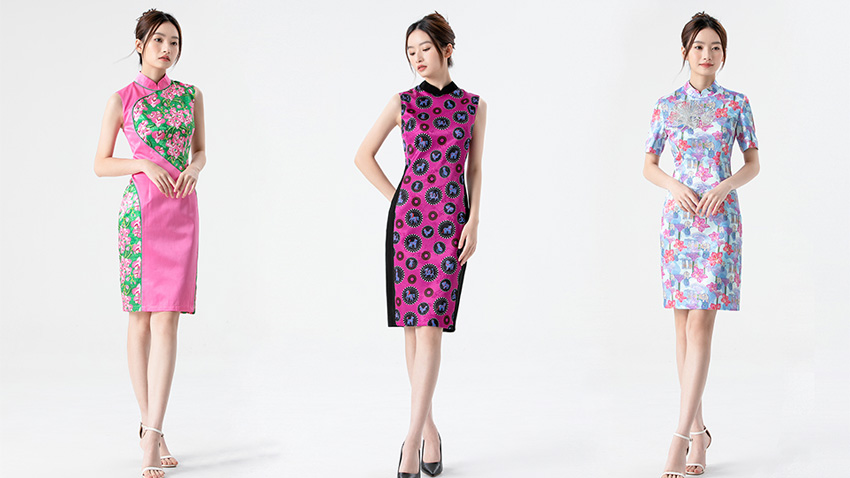The Cheongsam – an elegant representative of Chinese culture whose roots are deeply intertwined with the advent of feminism and woman empowerment in the country.
The Cheongsam, or the Qipao, arrived in the 20th century amid political upheaval in China. It originated from the long and tight robes worn by the Manchu women from the Qing dynasty. As the women in China became more aware of their rights and began finding work in Universities, they started donning the Qipao.
The Qipao is painstakingly hard to stitch and make. It is a handmade garment that requires particular skill to sew in the beads and embroidery. The qipaos targeted for day wear are more straightforward, but the ones made for evening wear had delicate patterns and beads sewn into them that tailors and craftsmen took days to make.
The dress found its way into other cultures like Hong Kong and Singapore, evolving into a body-hugging ensemble with a side slit and a cylindrical collar. Later on, it was termed as a reminder of the bourgeois culture in China and was banned by the communist regime.

The rest of the world moved on to the cheaper and easier-to-wear jeans and shirts outfits that came from the western influence. The dress still appears as it is worn by ministers, actresses, and actual figures when representing Chinese culture.
The qipao that was lost for so long has started making its fashionable comeback. The newer generation of women no longer views the qipao as a reminder of the old ages. Instead, it is seen as a stylish heirloom piece that can be worn in different ways and styles to add variation to their wardrobe.
The Cheongsam is still used in Hollywood movies to represent Chinese culture, which is one of the main reasons it is gaining popularity in the Asian regions again. Movies like In the Mood for Love, Lust, and Caution have done some beautiful variations of the qipao.
Young Chinese fashion designers are also taking inspiration from this traditional garment style for their runway displays.
Designers like Guo Pei, Jean Paul Gaultier, and Yves Saint Laurent have all added twists to the qipao elements and created styles that suit the modern-day woman.
One such brand, Blum & Co, which has been producing workwear for women in Singapore for over 30 years, is bringing back the elegance and empowerment of a qipao by creating an inspired line of workwear.

They have added their Singaporean touches to the fabrics and the designs, like the usage of the Merlion icons and the batik prints. The use of airy and light fabric and design elements like lace collars make the qipao very appealing to younger and more aware woman consumers in Singapore.
The line includes pieces that can be worn from day to night. Blum & Co stays true to its culture of innovation and aims to re-introduce the qipao into the Singaporean fashion world.
The qipao may make its cameos throughout history and experience as the times’ change, but one thing is for sure, it is definitely one piece of garment that is here to stay!


